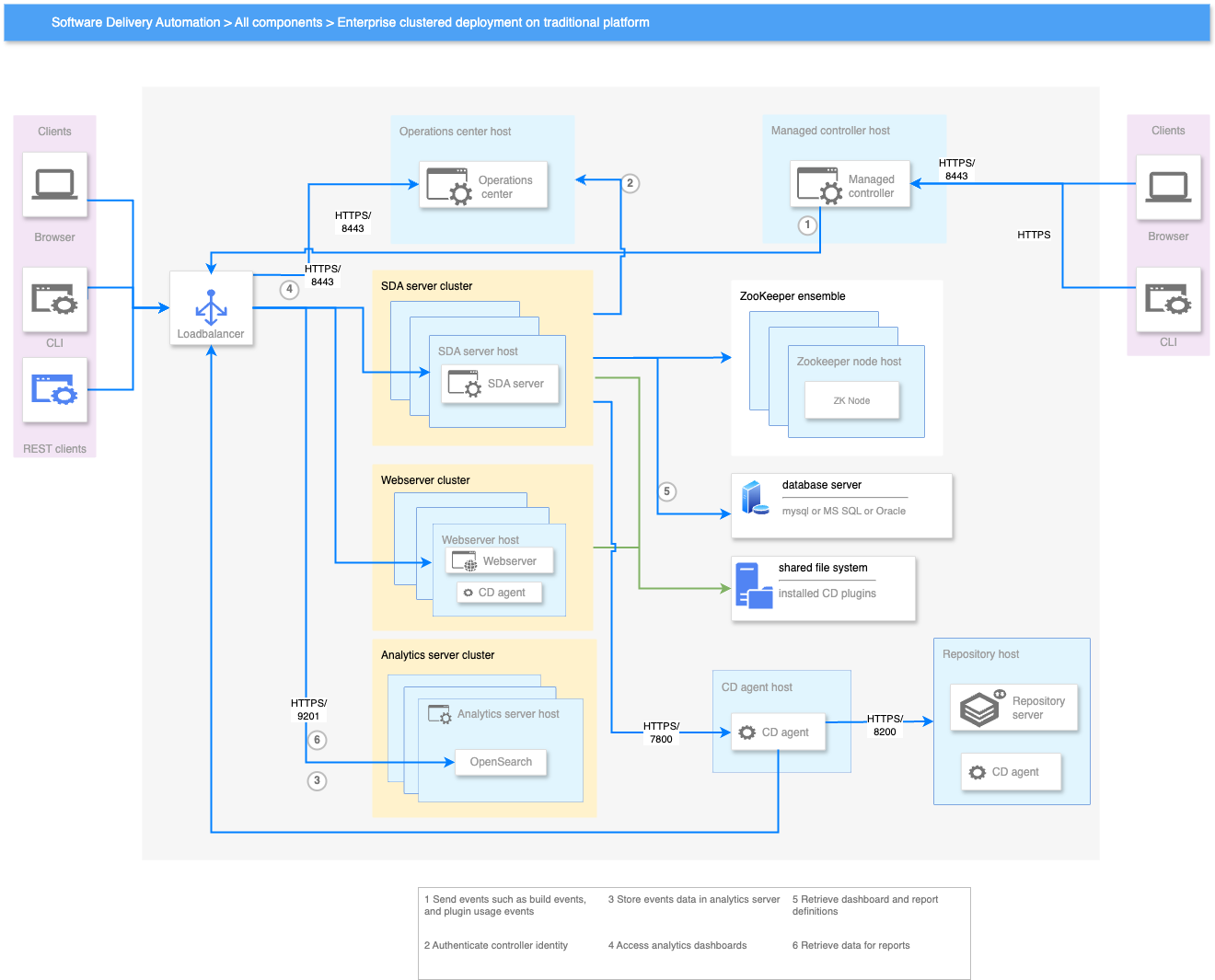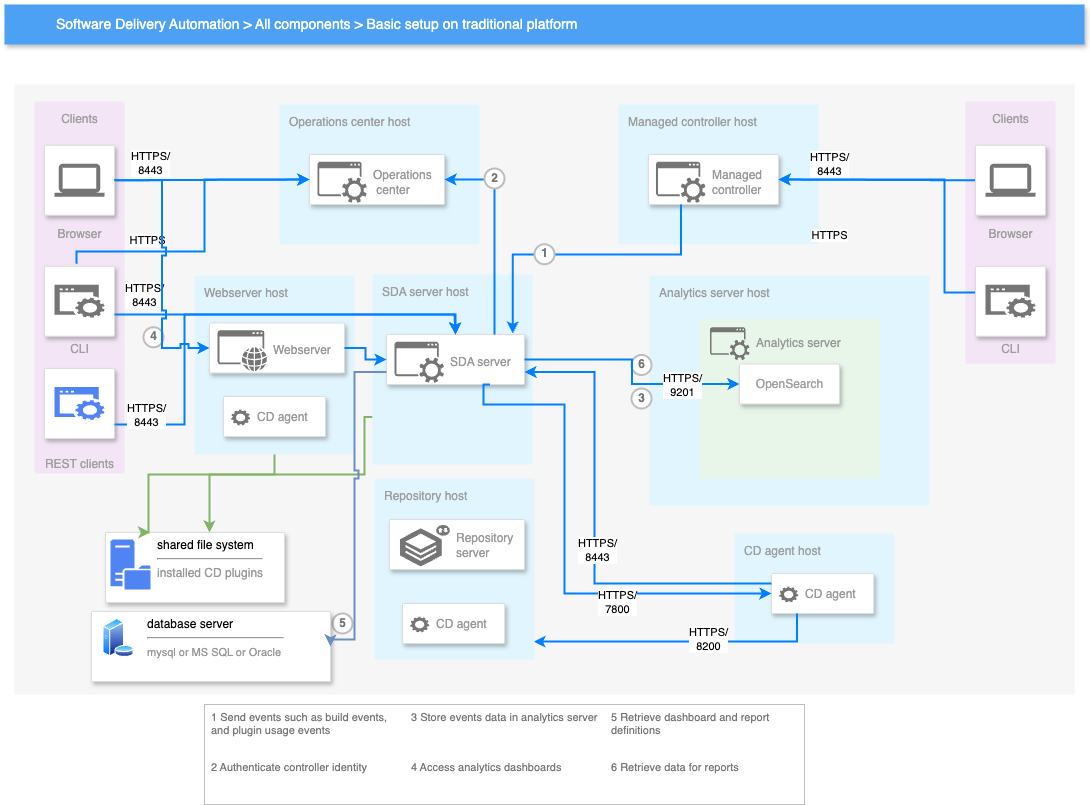Clustered production deployment
| These diagrams are for versions 10.7 and later. To view previous versions, access an earlier version of the CloudBees Software Delivery Automation documentation. |

External port usage
| Name | Protocol | Port (default) | Notes |
|---|---|---|---|
Operations center |
TCP, TLS |
443/80 |
Browser, and CLI interface |
Webserver |
TCP, TLS |
443/80 |
Browser, and CLI interface |
SDA Server (aka CD Server) |
TCP, TLS |
8443/8000 |
CloudBees CD API protocol |
CD Agent |
TCP, TLS |
7800 |
CloudBees CD agent protocol |
Repository |
TCP, TLS |
8200 |
CloudBees repository protocol |
Repository (Routed) |
TCP, TLS, agent routes calls |
7800 → 8200 |
Repository protocol routed by agents |
CD Server (Routed) |
TCP, TLS, agent routes calls |
7800 → 8443 |
CD API protocol routed by agents |
CD Server Stomp |
TCP, TLS |
61613 |
CD Stomp messaging — rarely used |
Analytics server |
TLS |
9200 |
ZooKeeper Usage
CloudBees Software Delivery Automation server (also called the CloudBees CD/RO server) clusters use a ZooKeeper ensemble to store and fetch critical configuration information, and also to coordinate activities between nodes in the cluster.
ZooKeeper is only needed when running multiple servers in a cluster for high availability or horizontal scaling. It is not needed for standalone CloudBees Software Delivery Automation/CloudBees CD/RO servers.
A production ZooKeeper ensemble consists of an odd number of ZooKeeper servers, typically 3 or 5.
ZooKeeper ports
ZooKeeper uses three ports, one for client access, and two for internal ZooKeeper use.
-
ZooKeeper Client Port,
2181: ZooKeeper clients—in this case CloudBees Software Delivery Automation/CloudBees CD/RO server hosts—connect to ZooKeeper ensemble hosts on the ZooKeeper client port.Every CloudBees Software Delivery Automation/CloudBees CD/RO server host needs to be able to connect to the ZooKeeper client port on every ZooKeeper ensemble host. No other hosts need access to this port.
-
ZooKeeper Leader Port
3888: Used internally by ZooKeeper. Every ZooKeeper ensemble host needs to be able to connect to the ZooKeeper leader port on all other ZooKeeper ensemble hosts. No other hosts need access to this port. -
ZooKeeper Peer Port
2888: Used internally by ZooKeeper. Every ZooKeeper ensemble host needs to be able to connect to the ZooKeeper peer port on all other ZooKeeper ensemble hosts. No other hosts need access to this port.
Call routing
In network topologies where it is not possible to route traffic directly between all hosts in the system, CloudBees CD/RO agents can be configured as gateways to handle the routing of repository server and CloudBees Software Delivery Automation server (also called the CloudBees CD/RO server) traffic.
Because the network topology is not known in advance, the webserver and repository servers always use their local agent to route traffic to the repository and CloudBees Software Delivery Automation server endpoints, and this is reflected in the diagrams.
The CloudBees CD/RO agents use the same port, 7800, and forward calls on to the server port 8443 or repository port 8200 on the destination host, as appropriate.
